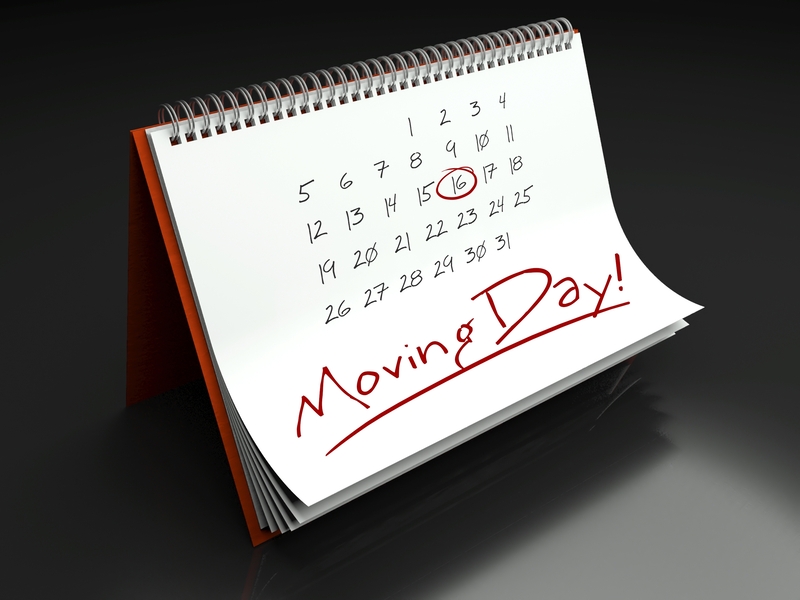Heavy Lifting Safety Techniques
Posted on 05/11/2025
Heavy Lifting Safety Techniques
Heavy lifting is an integral part of many professions, including construction, manufacturing, warehousing, and even healthcare. While these tasks are essential, they pose significant risks if not performed correctly. Implementing proper heavy lifting safety techniques not only prevents injuries but also improves productivity and employee well-being. This article delves into the best practices and strategies for safe heavy lifting.
The Importance of Heavy Lifting Safety
Injuries arising from improper lifting techniques can range from minor strains to severe musculoskeletal disorders (MSDs) affecting the back, shoulders, and elbows. According to the Bureau of Labor Statistics (BLS), back injuries account for approximately one-third of all reported work-related injuries. Adopting safe lifting techniques can mitigate these risks and create a healthier work environment.

Pre-Lift Planning
Safety begins with preparation. Before lifting any object, take a moment to plan your approach. Assess the weight and shape of the load to determine if you need assistance or mechanical aids. Here are several steps to take:
- Inspect the object: Check for any sharp edges, wet or greasy spots, and determine if the load is stable and balanced.
- Clear the path: Ensure there are no obstacles between the starting and destination points.
- Determine the best lifting technique: It might be necessary to use specific methods like team lifting or mechanical aids for particularly heavy or awkward loads.
Proper Lifting Techniques
Understanding and implementing the correct lifting techniques is crucial to prevent injuries. The following steps outline a standardized approach for safe lifting:
1. Stand Close to the Load
Positioning yourself as close to the object as possible reduces the strain on your back. A wide stance provides stability and balance, which is essential for maintaining control over the load.
2. Bend at the Hips and Knees
Always use the power of your legs to lift rather than your back. Squat down by bending at the hips and knees while keeping your back straight. This posture shifts the load-bearing responsibility to the stronger muscles in your legs.
3. Use a Firm Grip
Make sure you have a solid grip on the object. It's recommended to use gloves if your grip might slip or if the surface is rough. Holding the object close to your body helps in maintaining control and reducing strain.
4. Lift Smoothly
Start lifting gradually, using the strength of your leg muscles. Avoid jerky or sudden movements, which can cause muscle tears or sprains. Stand up slowly, ensuring that the load remains balanced and under control.
5. Keep the Load Close
Hold the load close to your body at the level of your waist or chest. Keeping the weight near your center of gravity reduces the leverage effect on your back and helps maintain balance.
6. Use Your Feet to Pivot
If you need to change direction, move your feet to pivot instead of twisting your torso. Twisting while holding a heavy object can strain your spine and lead to back injuries.
Team Lifting Techniques
For objects that are too heavy or large for one person to handle, team lifting is a safer alternative. Team lifting requires coordination and communication to ensure both lifters share the load equally and move in unison. Here are essential considerations:
- Plan Together: Discuss the lifting strategy and designate one person to lead the movements. This helps in synchronized lifting and reduces confusion.
- Lift and Lower Synchronously: Both lifters should lift and lower the object simultaneously, avoiding uneven load distribution.
- Take Small Steps: When moving, take small, synchronized steps to maintain stability and control over the load.
Using Mechanical Aids
Mechanical aids, such as forklifts, hoists, and trolleys, are invaluable tools for heavy lifting. They reduce the physical burden on workers and minimize injury risk. However, it's essential to use these aids correctly:
- Training: Ensure all operators are adequately trained in the use of mechanical aids.
- Inspections: Regularly inspect the equipment to confirm it is in good working condition.
- Proper Usage: Follow the manufacturer's guidelines and weight limits to prevent equipment failure.
Workplace Ergonomics
Effective workplace design can significantly reduce lifting-related injuries. Ergonomic improvements include:
- Height-Adjusted Platforms: Adjust the height of work surfaces to minimize the need for bending or reaching.
- Storage Solutions: Store heavy items at waist height to make lifting safer and more efficient.
- Frequent Breaks: Encourage taking regular breaks to prevent fatigue, which increases the risk of injury.
Personal Protective Equipment (PPE)
Utilizing appropriate PPE can enhance safety during heavy lifting operations:
- Back Supports: Use back support belts to provide additional support during lifting tasks.
- Gloves: Wear gloves to protect hands from cuts, abrasions, and improve grip.
- Footwear: Wear sturdy, non-slip footwear to provide adequate support and reduce the risk of slips and falls.

Employer Responsibilities
Employers play a critical role in ensuring a safe lifting environment. Their responsibilities include:
- Providing Training: Offer regular training sessions on safe lifting techniques and the use of mechanical aids.
- Ergonomic Assessment: Conduct ergonomic assessments to identify potential hazards and implement corrective actions.
- Encouraging Reporting: Foster a culture where employees can report unsafe conditions without fear of retribution.
Conclusion
Heavy lifting is an unavoidable aspect of many jobs, but it doesn't have to be hazardous. By understanding the principles of safe lifting techniques, utilizing mechanical aids, adopting ergonomic workplace practices, and wearing appropriate PPE, workers can minimize the risk of injury. Employers also have a vital role in training, providing resources, and maintaining a safety-first work environment. Together, these measures ensure that heavy lifting tasks are performed safely and efficiently, protecting the health and well-being of all employees.




